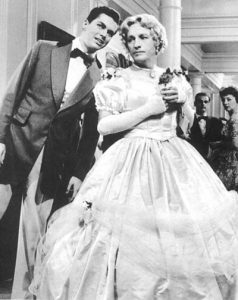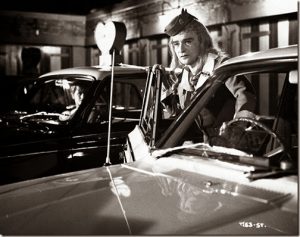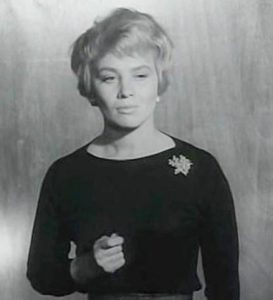Drag in the Cinema — The Early 1960s
The end of the ‘50s and the beginning of the ‘60s represented a big transition, not just for drag in cinema, but for cinema as a whole. The post-war experiences that led to McCarthyism and a wholesome-sitcom like atmosphere in the United States, were ending. In it’s place were beatniks, the civil rights movement, and a sexual revolution that started in the late ‘60s and into the early ‘70s.
Last time we talked about Some Like it Hot, a film directed by Billy Wilder that had drag on screen for an unprecedented amount of time. Though I can’t say that Wilder used drag that much in his films, his 1961 film One, Two, Three starring James Cagney (in his last screen role until he appeared in 1981’s Ragtime) also featured a drag scene. Cagney played an executive with Coca-Cola in Berlin. In one scene where they are trying to fool the Russians of the “east,” Cagney substitutes German actor Hanns Lothar in place of the beautiful blonde the Russians have requested. We see him heading toward the Russians’ car in a short polka dot dress, a hat and white high heels. He toddles along . . . then trips and falls down. As the Russians go to rescue her . . . they discover the ruse!
Another 1961 film with a short drag sequence was On the Double. Comic actor Danny Kaye played an American private that impersonated a British officer. In one scene he impersonates Marlene Dietrich (a favorite of female impersonators) complete with black dress, fur, and fishnet stockings.
If there was ever a director that liked to put drag in his films, it has to be Blake Edwards. It’s easier to name the films that he didn’t have drag sequences! Beginning with 1960’s High Time, he had a string of films featuring crossdressed characters. In High Time it’s Bing Crosby (!) who gets to put on the dress. As part of a fraternity initiation for a college he is attending, Der Bingle has to show up at a ritzy party dressed as a Southern Belle. He didn’t look half-bad, but that long-full dress didn’t allow us to see what kind of legs he had.
One good source of drag has always been the “Carry On” films from England. The series began in 1959 with Carry on Nurse and is one of the longest running film series in cinema history. Two early entries that featured drag were 1960’s Carry on Constable with Kenneth Williams and Charles Hawtrey as a couple of bobbies who go “undercover.” In Carry on Cabby a couple of the boys dress as women to invade a group of women taxi drivers.
Of course British comedians are rather fond of “dressing up” anyway. And such was the case when England’s Norman Wisdom put on a dress in one of his many films. (Most of which have never seen the light of day in the U.S. despite the fact that Wisdom appeared on Broadway in a musical called Walkin’ Happy.) In 1963’s A Stitch in Time he masqueraded as a nurse complete with white starched dress and black high heel shoes.
Another British film that featured drag, though decidedly not a comedy, was the little-seen 1961’s The Impersonator. The film featured John Crawford (not the kid from The Rifleman TV series) as a female impersonator. Like some other films, the ruse was not revealed until the film’s climax.
The early ’60s showed us the shape of things to come. By the time we got into the mid-1960s, drag was popping up everywhere. Next time we’ll take a look at drag as seen during those middle years. See you then!
Moved to make a comment? Login here and use the comment area below.








